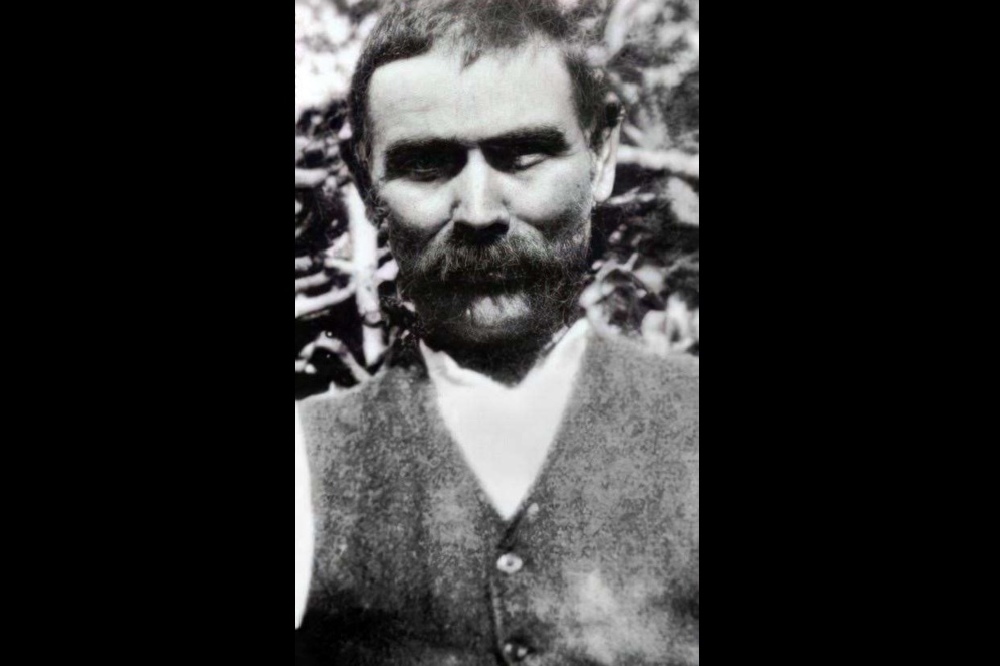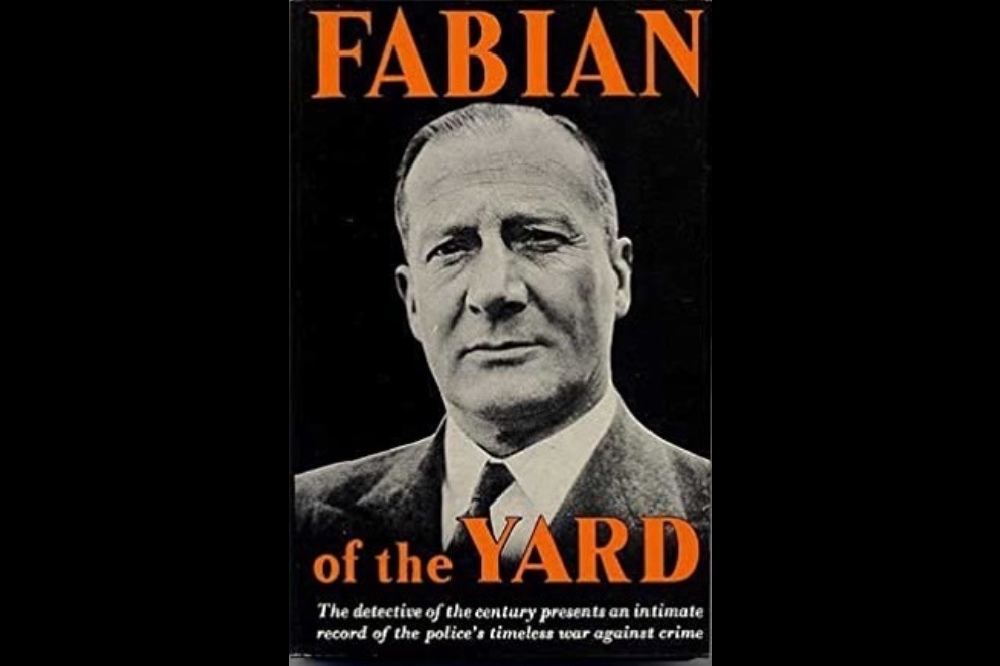On Valentine’s Day (February 14th) in 1945, a 74-year-old farm worker named Charles Walton was found murdered on a farm in Warwickshire. While occult phenomena have frequently been cited with regards to this case, it has never been solved, and remains the oldest cold case in the county’s police records.

Charles Walton
Charles Walton was a widowed agricultural worker who lived with his 33-year-old niece Edith (who he adopted at 3-years-old when his sister died). Despite having lived in Lower Quinton all his life, he was rather seen as reclusive, though he did not appear to be disliked by his neighbours. He constantly sought farm work to supplement his income, even though he had rheumatism and walked with a stick. On the day of his death, he had been employed to trim the hedges on a field called Hillground located on The Firs farm on Meon Hill in Lower Quinton.
When he failed to return home that evening, a worried Edith conducted a short search with the help of their neighbour Harry Beasley and the farmer Alfred Potter. Walton’s body was soon found near the hedgerow, mutilated by his own pitchfork and bill hook.
Walton had been brutally beaten round the head with his walking stick, had broken ribs and numerous defensive wounds. Meanwhile his throat was slashed so deeply with his bill hook that his head was almost severed, and his pitchfork had been driven into him just below the jaw, pinning him to the ground. A Dr. Webster concluded that he must have been killed between 1pm and 2pm.
The prime suspect for the case was Alfred Potter, Walton’s employer for the previous nine months. Detective Superintendent Robert Fabian of the Metropolitan Police, who was the lead investigator in the murder, claimed that Potter had been acting suspiciously throughout the investigation.
Potter did deliver a detailed statement regarding his and Walton’s movements on February 14th. On the day in question, Potter happened to be in a pub called the College Arms until noon. When he left the pub and returned to the farm, he noticed Walton working in the field and explained in his statement that he would’ve gone over to him was it not for the fact that he had to remove one of his heifers from a ditch. With regards to what time he saw Walton on his way home, his story seems to vary between 12:10 and 12:40.
While no motive could be found for Potter, he did reveal in a second interview that he would pay Walton for the hours he worked on a fortnightly basis, but it would be Walton who told him how many hours he’d done and Potter suspected that Walton may sometimes have been paid for hours he had not actually worked.
Fabian’s suspicions may have been further roused by Potter telling a PC Lomasney that his fingerprints may be on the murder weapons because he touched them when he found the body. No fingerprints were found, but in any case Harry Beasley denied that Potter needed to touch the weapons as it was obvious that Walton was dead.
Potter was naturally keen to move the focus away from him and suggested that the murder was "the work of a fascist from the camp" - a reference to a nearby camp of Italian prisoners of war. He and his wife appeared “almost hysterical with delight” when he found that a POW had indeed been detained by police.
Fabian’s report stated that Potter had come home after spotting Walton in the field, read the paper for five minutes, then went to help another of his workers, Charles Batchelor. They then saw that the church clock had struck 1pm, and so Potter returned home again for lunch. Both his wife and Batchelor’s stories corroborated Potter’s.
On the other hand, Lomasney thought Potter seemed unusually shaken by Walton’s murder for a man who was used to seeing slaughter, and his heifer was apparently not removed from the ditch until 3:30 - around three hours after he claimed to have gone to attend to it. In any case, his story about reading the paper and helping out Batchelor seemed to contradict his story about seeing to the heifer in the first place.
In the end, there was insufficient evidence to secure a conviction against Alfred Potter and no one else was ever seriously implicated in the murder.
Over the last few decades, there has been much sensationalism surrounding the case because of its links to supposed witchcraft. There were a number of factors that led folk to believe this was a ritual killing. Some reports claimed that he had a cross carved into his chest (or, in some articles, his throat), though official statements claim no such thing. Plus, a “large black dog” was apparently spotted in the area; alluding to a well-known harbinger of death.
Fabian even took it upon himself to research possible links to the occult. He himself claimed to have seen a black ‘ghost’ dog in the area, and a black dog was even found hanged by its collar in a bush near where Walton’s body was found. While this could be attributed to superstitious townsfolk executing poor domestic pets over fears of evil familiars, the dog was allegedly found around the time of Lupercalia (February 15th) - a Roman festival whereby dogs were sacrificed to ensure a good harvest.

A famous English witch named Gerald B. Gardner debunked Fabian’s claim in his memoir, Fabian of the Yard, that the murder took place close to “the stone Druid circle of the Whispering Knights” and that Walton had been killed “by a reproduction of a Druidical ceremony on St Valentine's Eve”.
“The Whispering Knights are not a circle, but part of a group of stones called the Rollright Stones: they are nothing to do with the Druids; and they are twelve miles away from Meon Hill,” Gardner wrote in his book, The Meaning of Witchcraft. Plus, there was the matter of Walton being killed on St. Valentine’s Day not St. Valentine’s Eve.
Gardner also pointed out several other frankly preposterous claims by an unknown woman of Walton being killed in a Black Mass at midnight (even though his body was found after midday), and thirteen people dancing in a circle around his body (even though his body was found by a hedgerow which wouldn’t leave much room for dancing).
But Fabian came across another story that piqued his interest. Thirteen miles away in Long Compton, a 79-year-old woman named Ann Tennant was murdered with a pitchfork by James Hayward as she walked home from the village shop one evening. The attack was interrupted by a farmer named John Taylor. The Stratford Herald reported at the time that the reason for the attack was that Hayward believed Ann Tennant was a witch.
“Hayward, for some time past, had been under the impression that he was influenced by witchcraft and that Mrs Tennant and several other women in Long Compton were witches, and he was determined to rid the village of them,” it was reported.
In his 1906 book Warwickshire: The Land of Shakespeare, Clive Holland pointed out the use of the pitchfork was significant in that they were once used to kill witches - however, further information on this is difficult to find, unless you count the pitchfork’s “angry mob” symbolism.
Holland does also mention that Hayward confessed his crime with the rather chilling proclamation: “I pinned her to the ground with a hayfork before slashing her throat with a billhook in the form of a cross.” However, this claim is erroneous as Tennant was attacked in front of myriad witnesses and none of those accounts reference a bill hook. Besides, Tennant did not die of her injuries until later that night.
There has been some suggestions that Ann Tennant and Charles Walton were related, but there’s no incontrovertible evidence for this.
One of the spookiest coincidences that probably ruffled Fabian’s feathers the most was a story in Folklore, Old Customs and Superstitions in Shakespeare Land of a young farm hand in Alveston (around 60 miles from Lower Quinton) who met a dog on his way home on nine successive evenings. “On the ninth encounter a headless lady rustled past him in a silk dress, and on the next day he heard of his sister’s death.” The name of the boy? Charles Walton.
Perhaps another reason why the occult fed into Fabian’s view of what happened was that the townsfolk apparently were not very forthcoming with information. He said he was met with “lowered eyes, reluctance to speak except for talk of bad crops – a heifer that died in a ditch.” But this was probably more likely due to a general distrust of outsiders, and perhaps them actually having no knowledge of the murder whatsoever.
Apparently, locals thought Walton eccentric and somewhat of a witch, and a story came out that he had seen a black dog ahead of his sister’s death. A search at his home allegedly uncovered several natterjack toads in the garden which had been associated with witches and the failure of crops.
Another story suggested that his mysterious missing pocketwatch (cited in the message from Warwickshire Police to Scotland Yard) was found in 1960 by a workman behind Walton’s cottage, and inside was contained a small black scrying mirror. What’s fact and what’s folklore will likely always be muddled, but Fabian himself was in no doubt that Walton’s death was a ritualistic murder.
In 1970’s The Anatomy of Crime, he wrote: “I advise anybody who is tempted at any time to venture into Black Magic, witchcraft, Shamanism — call it what you will — to remember Charles Walton and to think of his death, which was clearly the ghastly climax of a pagan rite,” he wrote. “There is no stronger argument for keeping as far away as possible from the villains with their swords, incense and mumbo-jumbo. It is prudence on which your future peace of mind and even your life could depend.”
Whatever the circumstances, Charles Walton was clearly murdered by someone. Could Alfred Potter have had an argument with Walton about money and lost his temper? And what was Walton’s relationship like with his niece’s father? Could Edith’s father, who lived seven miles away in Stratford, have been jealous or angry that Walton adopted Edith?
And what about Edith herself? Her relationship with Walton certainly seemed good on paper if she was still living with him into her thirties. And it seems Walton paid her handsomely for house-keeping while still paying rent and buying food. Certainly her reaction to seeing her uncle’s body was one of terrible grief.
MORE: Murder in The Valleys: Sky announce new true crime series
Edith Walton had also allegedly been going out with one Edgar Goode for some years, though he was eliminated from police enquiries. Could this relationship have been a source of displeasure for her uncle?
We’ll likely never know what happened, although the author of Murder by Witchcraft, Donald McCormick, stated 22 years later that he may know the identity of the killer: “I do not think I have solved the crime, but I think I know who did it.”
Tagged in Murder True Crime

